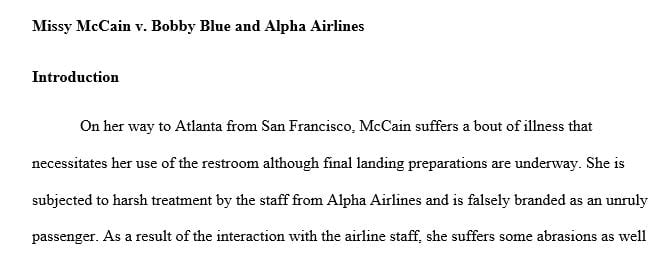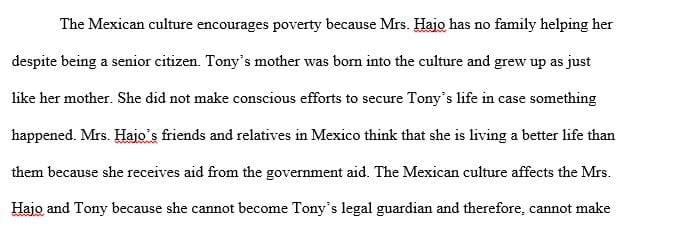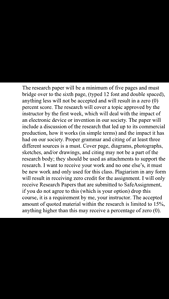The function of HIV protease, integrase, and reverse transcriptase.
The function of HIV protease, integrase, and reverse transcriptase.
The function of HIV protease, integrase, and reverse transcriptase.
ORDER NOW FOR CUSTOMIZED AND ORIGINAL ESSAY PAPERS
Module Overview
In this Module we will apply what you have learned in this course to common diseases caused by pathogens belonging to bacterial, viral, and fungal groups.
Now that we have a general idea of what pathogens are, how they work and how they identify, adhere to and invade their human host, let us review the specific features of some significant human pathogens. We begin with common bacterial infections:
GRAM POSITIVE COCCI.
Gram + cocci are non-motile bacteria occurring in a linear arrangement (Streptococci that cause strep throat) or in clusters , like bundles of grapes (Staphylococci that cause staph infections). Many species are normal inhabitants of the skin,mucous membranes and internal organs and are normally non-pathogenic, however under altered ecologic conditions (for instance after the use of broad spectrum antibiotics or in immune deficiency syndromes), they may cause opportunistic infections. The major pathogens in this group are Streptococci and Staphylococci that cause some of the most common bacterial infections in humans. Gram + infections are responsible for millions of deaths. Proper antibiotic treatment usually controls these infections, however if antibiotics are improperly used, resistant strains develop which are difficult to control. Presently the so-called “superbugs” are a major concern among epidemiologists and general practitioners. Infections with Gram+ cocci are particularly dangerous among newborns, very old patients or immunocompromized patients.
GRAM NEGATIVE COCCI. Pathogenic gram negative cocci belong to the genus Neisseria. There are only 2 important human pathogens in this group: N. meningitides that cause meningitis (meningococcus) and N. gonorrhea that cause gonorrhea(gonococcus). Neisseria are gram negative diplococcic, mucous membrane parasites that grow either anaerobically or as facultative anaerobes. Non-pathogenic Neisseria are part of the normal oral and nasopharyngeal flora. Asymptomatic carriers may harbor N. meningitides in their upper respiratory tract! Neisseria may be isolated from blood, nasopharynx, skin, cerebrospinal fluid, urethra, cervix, vulva and anus.
Meningococcus. N. meningitides may cause an assortment of infections other than meningitis, including septicemia ( a very lethal systemic infection) nasopharyngitis, septic arthritis, endocarditis, osteomyelitis and pneumonia. Nasopharyngitis is often asymptomatic but it may be the primary infectious focus leading to meningitis or septicemia. Meningococcemia (septicemia) may or may not be associated with meningitis. The clinical picture includes high fever, disseminated microthrombosis leading to petechiae, purpura and arthritis . In several instances there may be hemorrhagic necrosis of both adrenal cortices and acute adrenal insufficiency (Waterhouse-Friderichsen syndrome). Septic shock and death may ensue within a short time.
Meningitis: Meningococcal meningitis is one of the many infections of the meninges that also include pneumococci, streptococci, staphylococci and tuberculosis.
Gonococcus: N. gonorrheae is the causative agent of the most common sexually transmitted disease throughout the world: Gonorrhea. Patients with this sexually transmitted disease may harbor other pathogens in addition to the gonococcus. N. gonorrheae also affects extra genital organs causing arthritis, pharyngitis, conjunctivitis, dermatitis and proctitis. Close to 3 million Americans are infected annually. The most common pathway of infection is through sexual intercourse. Its highest incidence is between 15 and 30 years of age.
GRAM+ SPORE-FORMING BACTERIA (BACILLI AND CLOSTRIDIA)
ANTHRAX: Of all the saprophytic forms of Bacillius, only B. anthracis is as potential human pathogen, although it is mostly responsible for diseases among horses, sheep, cattle, goats and swine. Anthrax has come to the center of world attention because of its potential to be used as illegal bacteriologic weapon. B. anthracis is a non-motile4 to 8 micrometer gram positive rod that shows a central endospore only in cultures. It is a facultative anaerobe that forms large, white, opaque colonies with undulating margins in agar plates. In smears they appear as long chains. Virulent strains are capsulated. This bacillus produces an antiphagocytic polypeptide and a protein-endotoxin complex that is antigenic. The vaccine is geared towards such a molecule. Anthrax is primarily an animal disease acquired by consuming contaminated grasses, through inhalation of the spores or through skin abrasions. The spore germinates into the vegetative form in the connective tissue. Protected by its antiphagocytic capsule, the bacillus multiplies and invades lymph vessels or blood vessels. This may lead to an often fatal septicemia. Human infections include the cutaneous anthrax that gives rise to the so-called malignant pustule and the respiratory infection (Woolsorter’s disease)
CLOSTRIDIA: This gram+ spore forming bacillus populates the soil, water and plants. Many are responsible for putrefaction and play an important role in the food chain. Few species parasitize human and animal intestines. C lostridia are gram + obligate anaerobes measuring 3 to 8 micrometers and forming rods. Spores germinate in anaerobic conditions in suitable humidity; they are heat resistant. The exotoxins are the main factors of pathogenicity. C. botulinum produces 8 neurotoxins. C. perfringens secretes 11 toxins, 2 of which cause human symptoms. C. tetanii causes tetanus by producing one of the most powerful toxins known to man, tetanospasmin. One mg of this toxin is enough to kill 200 million mice! This toxin is released during lysis of the vegetative cell and acts on the central nervous system, blocking the transmission of nervous impulses. C. tetanii is part of the normal intestinal flora in up to 25% of the population and is present in the feces of horses and cattle. This bacterium is unable to germinate in the GI tract. Infections result from contaminated wounds, with fibrin, in anaerobic conditions. It may also be present in dirty needles among drug addicts. Septic deliveries or abortions are also a source of contamination. Tetanus causes convulsions and tonic paralysis of voluntary muscles leading to respiratory muscle paralysis, opisthotonos and death.
Botulism. In most cases this is not a true infection but a poisoning caused by the ingestion of preformed toxins produced in improperly refrigerated food contaminated with the bacterium. Contaminated honey may poison children. Occasionally the toxin may form in contaminated wounds.
Module 5’s Home page was packed with pathogens! Choose three that surprised you most, give a brief description, and explain why you were surprised by them.
For the second part of this assignment, you will take a closer look at the HIV virus, using this document to help you define the following terms. First begin by reviewing the structure of DNA and the processes of transcription and translation.
Next address these topics on HIV:
Discuss the function of HIV protease, integrase, and reverse transcriptase.
Identify the characteristics of HIV which account for its transmission. Include the basic epidemiology of this virus and its method of transfer.
Discuss the normal function of B-lymphocytes, killer T-lymphocytes, helper T-lymphocytes, and macrophages in the immune system. Explain how HIV affects these components of a healthy immune system.
Explain the function of the complement system and do some research to investigate how the HIV virus turns the complement system against the human body. How has this lead to new treatments for this disease (Hint: Wiki or PubMed is a good place to begin your research)?
Assignment Expectations
Please include a cover sheet for your Case assignment. Use headings to separate each section’s questions, and answer each question using complete sentences. Use your own words and build on the ideas of others. Quoted material should not exceed 10% of the total paper (since the focus of these assignments is critical thinking). When material is copied verbatim from external sources, it MUST be enclosed in quotes. The references should be cited within the text and also listed at the end of the assignment in the References section (preferably in APA format).
References: List the references used to address the complement system and any information you researched to complete this assignment. The references should be listed at the end of the assignment in a References section and should be cited throughout (preferably in APA format).
Organization: Subheadings should be used to organize your paper according to question
The following items will be assessed:
Assignment-Driven Criteria – Did you address each requirement?
Critical Thinking – How well did you synthesize and evaluate the topics addressed?
Scholarly Writing – Is everything explained in complete sentences?
Quality of References and Assignment Organization – Did you organize your paper with headings?
Citing Sources – Did you list your references and cite information where necessary?
Required Reading
Read the following chapters in the Microbiology etext available at https://www.boundless.com/microbiology/textbooks/boundless-microbiology-textbook/
Chapter 16: Microbial Ecology
Section 1: Microbial Ecology
Section 2: Soil and Plant Microbiology
Section 4: Nutrient Cycles
Section 5: Microbial Symbioses
Section 6: Microbial Bioremediation
Additional Resources
Bisen, P. S., Debnath, M., Prasad, G.B. “Chapter 1 Human and Microbial World,” “Chapter 2: Gene technology: Application and Techniques,” “Chapter 5 Diversity of Microorganisms.” Microbes: Concepts and Applications. Wiley, Somerset NJ. 2012. eISBN: 9781118311905
………………..Answer Preview…………….
HIV protease processes the gag-pol and gag polyproteins when virion maturation takes place. This enzyme has an important activity when it comes to virus infectivity. It is responsible for rendering the protein a key therapeutic target for the treatment of AIDS. HIV protease also plays a critical role in the HIV life cycle. It cleaves polyproteins that have been newly synthesized at the right places, and this consequently….
Get a 10 % discount on an order above $ 50
Use the following coupon code :
NURSING10
"Looking for a Similar Assignment? Get Expert Help at an Amazing Discount!"








